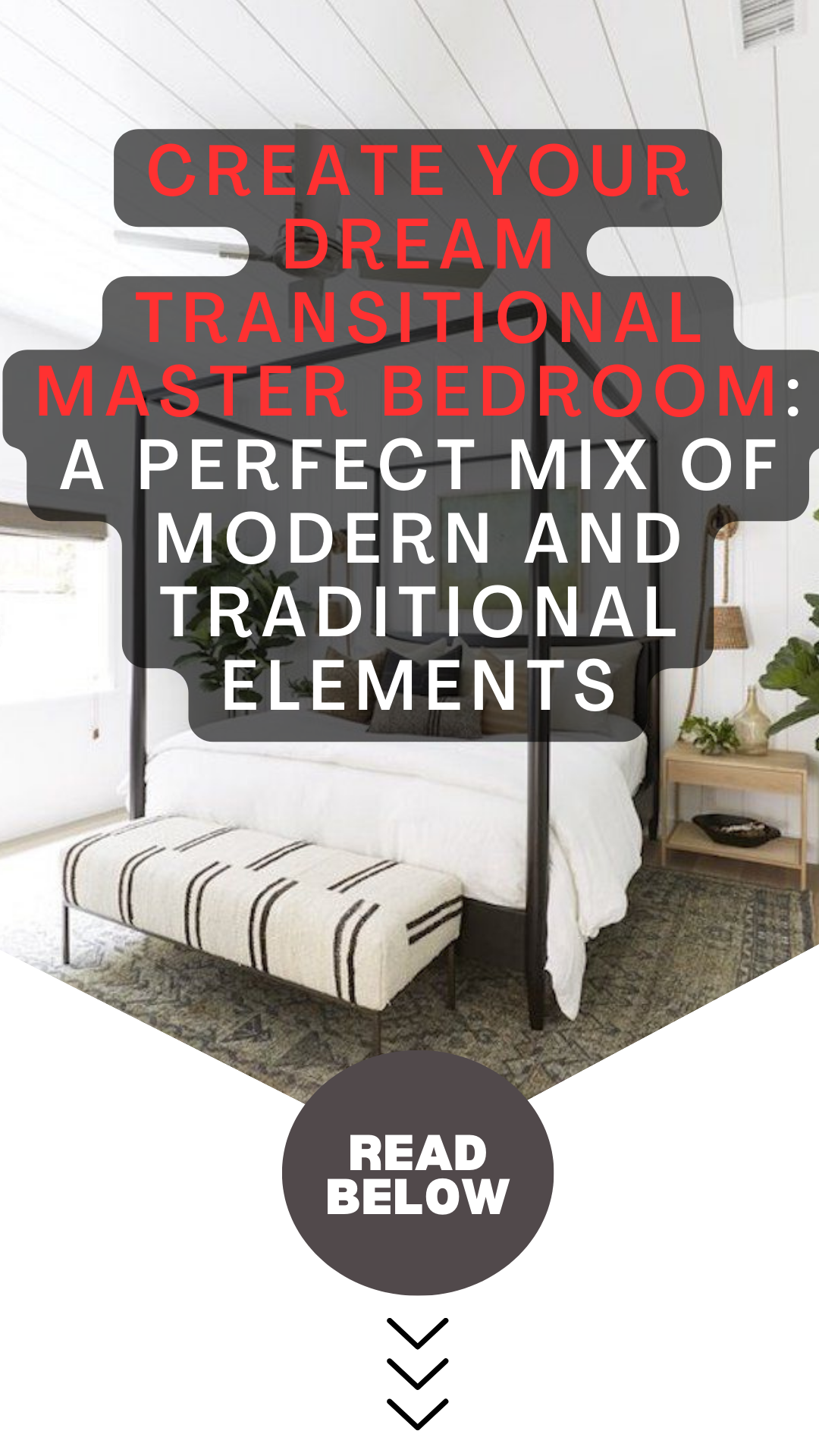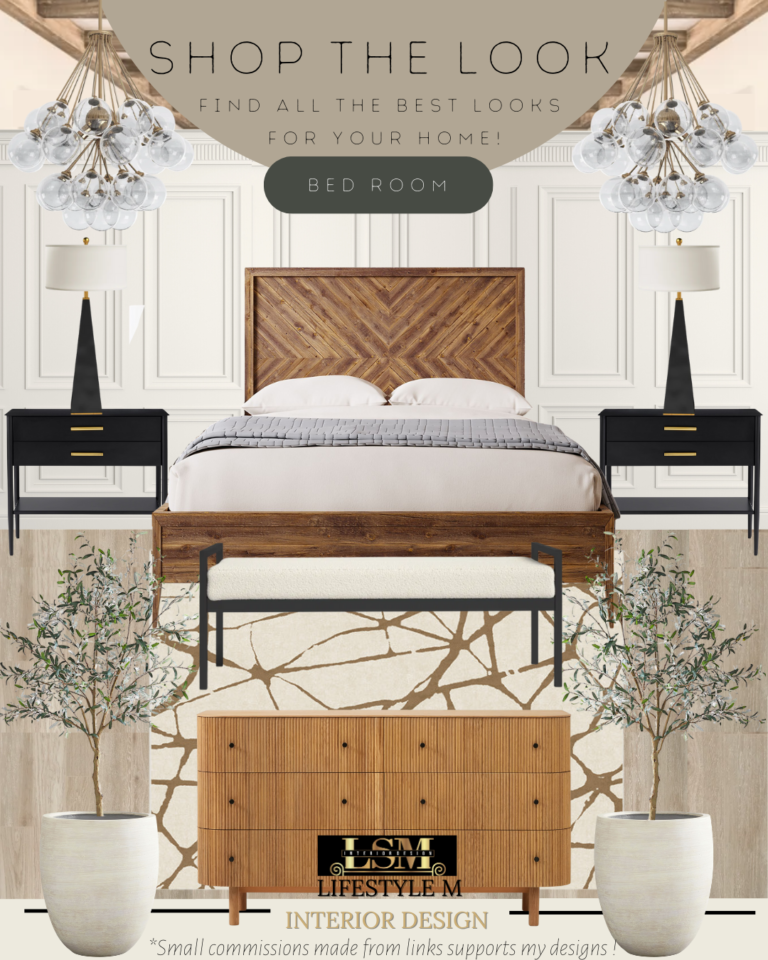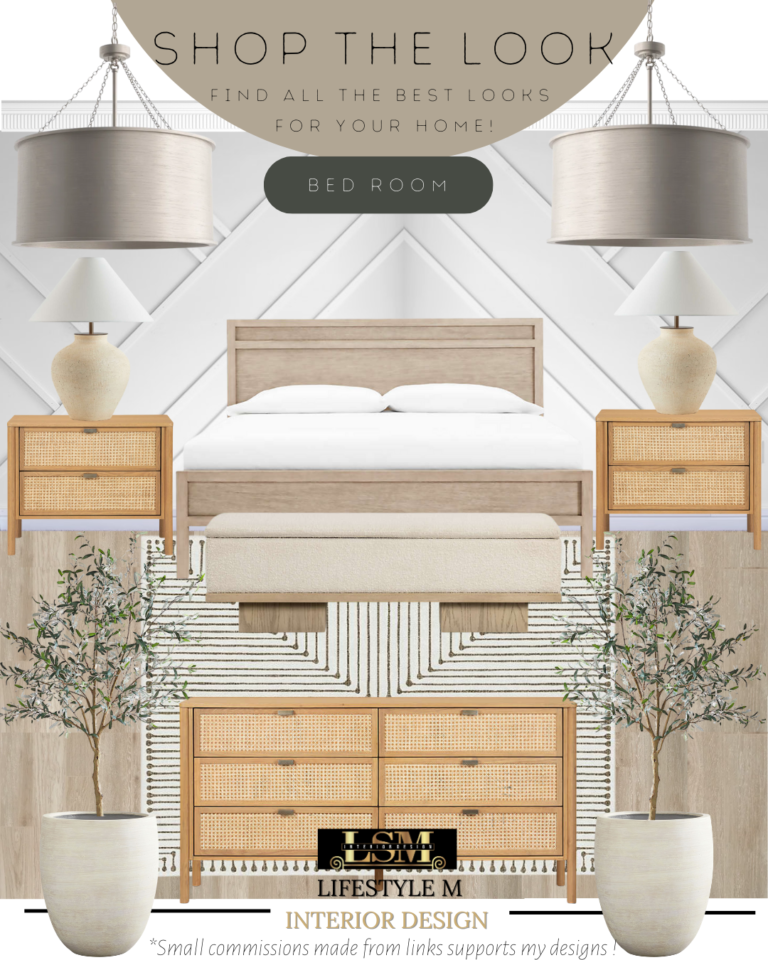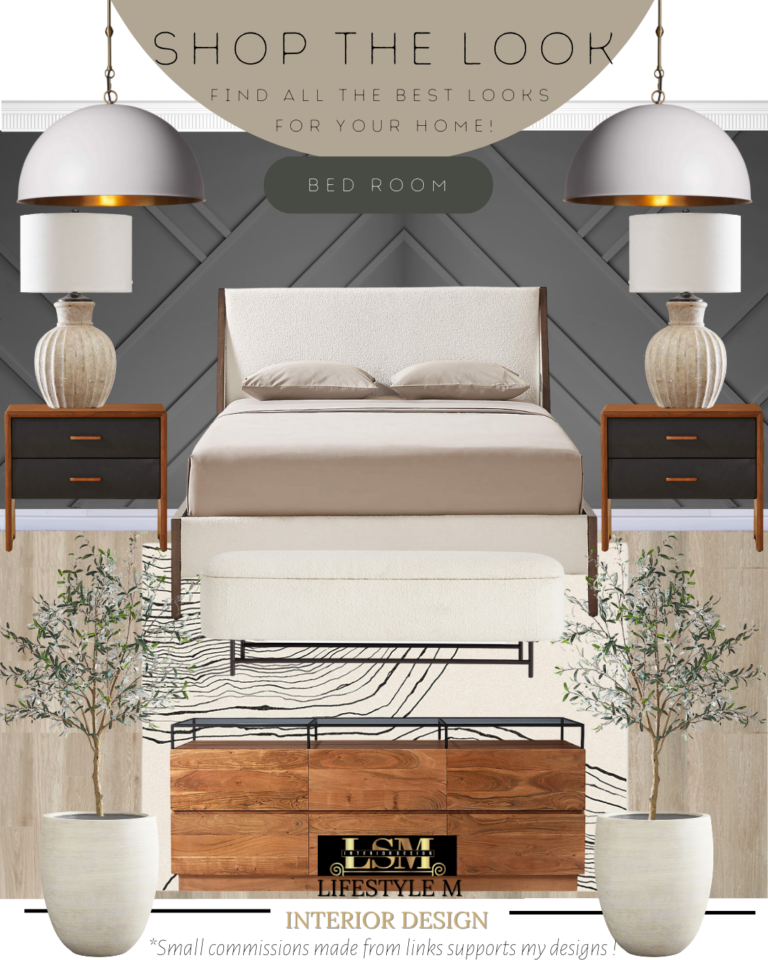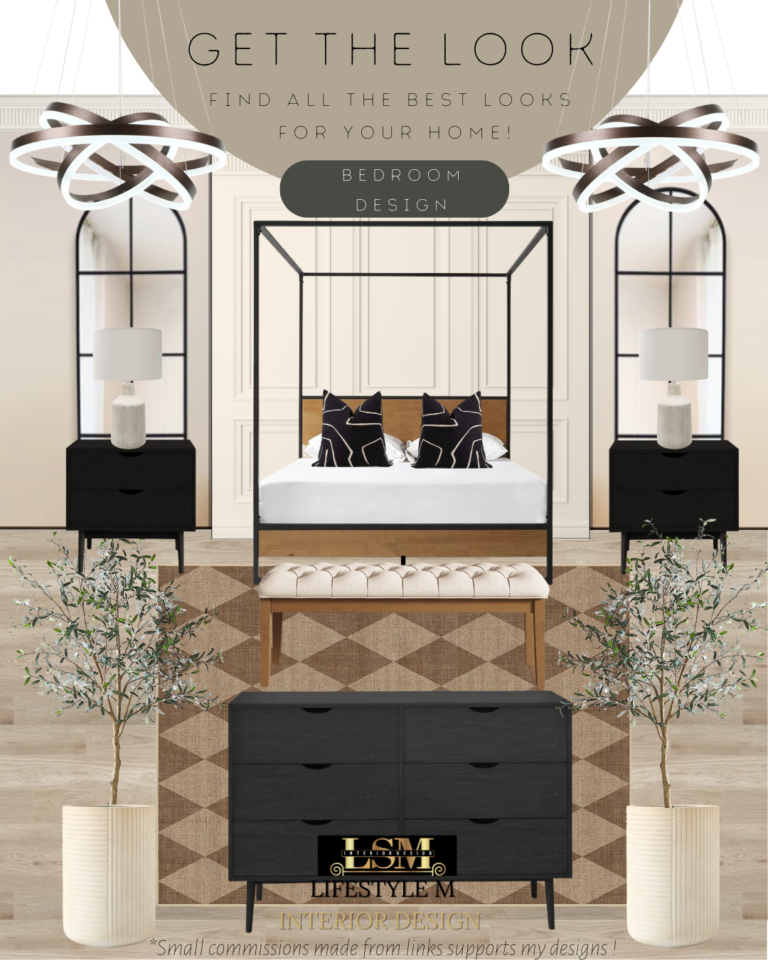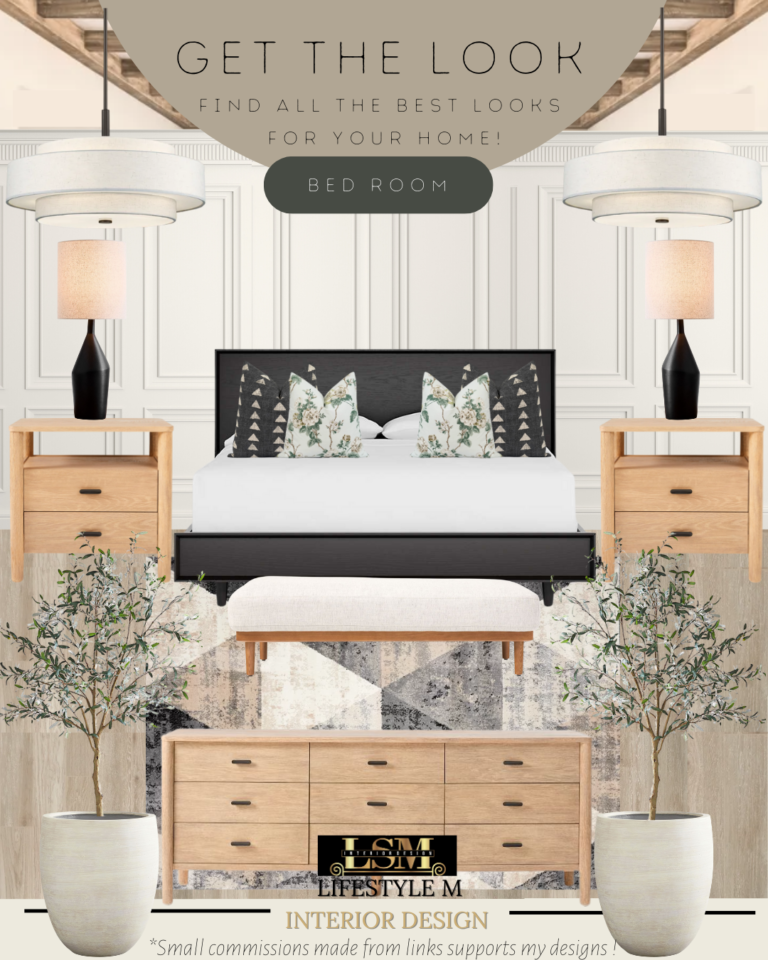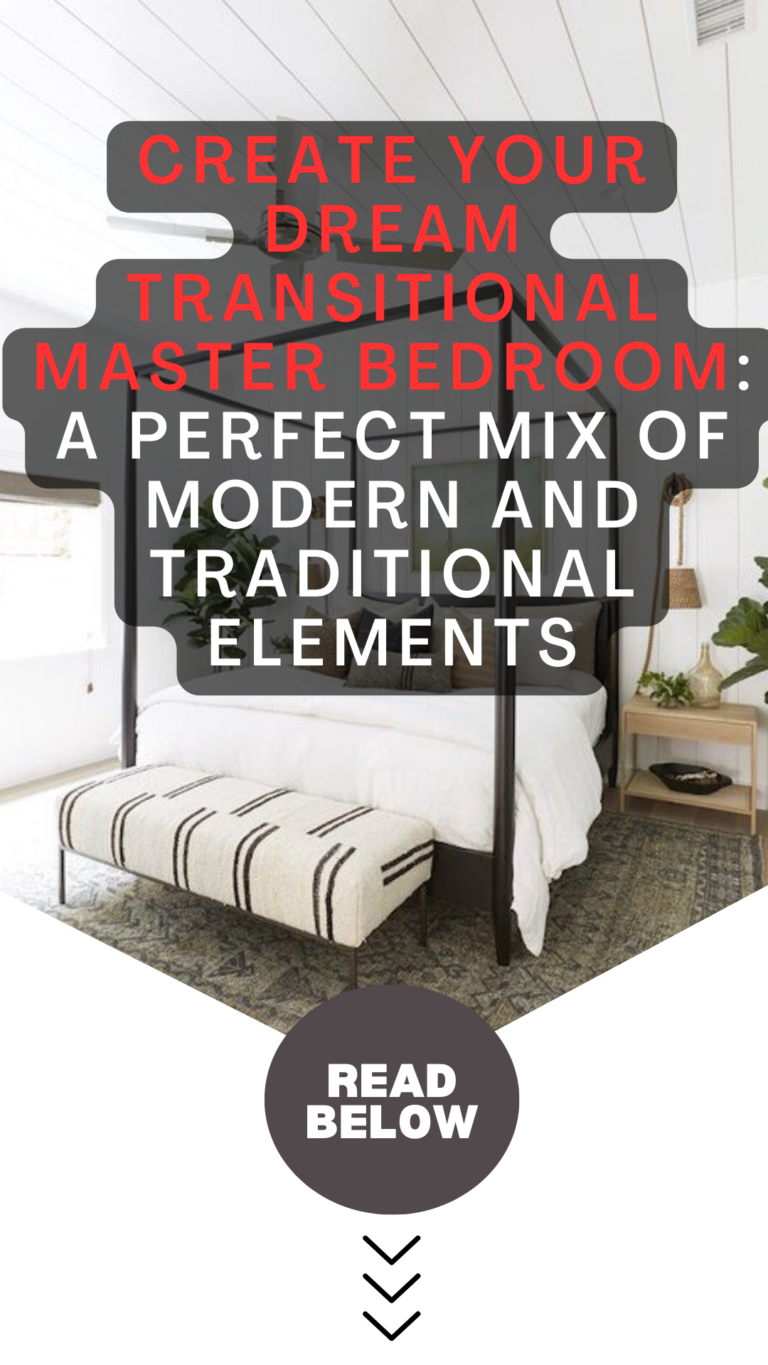
Lifestyle M Interior Design
Create Your Dream Transitional Master Bedroom: A Perfect Mix of Modern and Traditional Elements
Are you struggling to decide on a design theme for your master bedroom? Look no further than transitional design – the perfect blend of modern and traditional elements. This style is known for its clean lines, neutral color scheme, and use of texture to create a warm and inviting space. In this article, we will explore the benefits of transitional design in a master bedroom and provide tips for incorporating these elements into your own dream space.
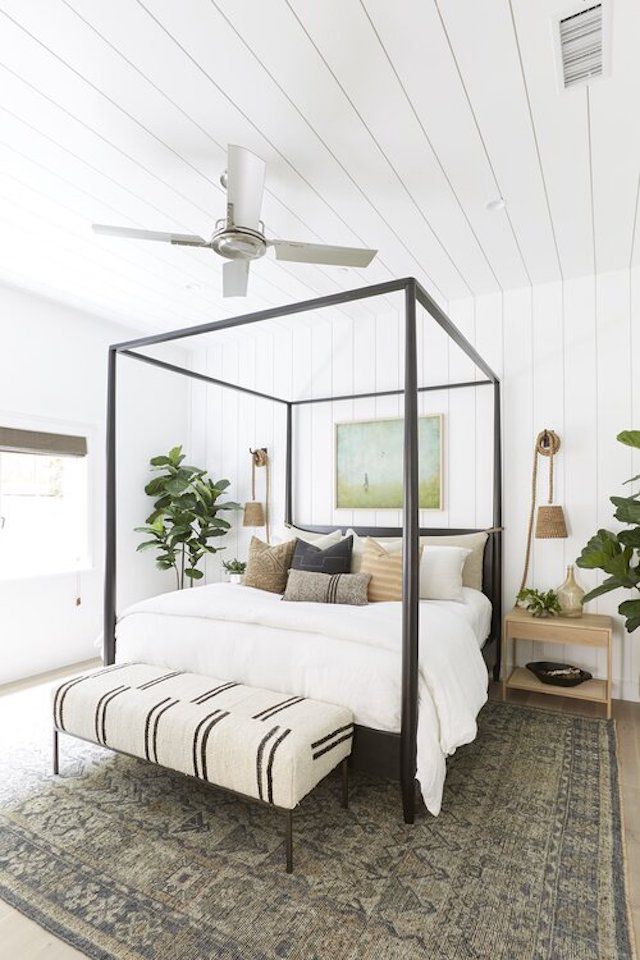
What is Transitional Design?
Transitional design is a style that combines modern and traditional elements to create a cohesive and balanced look. This style is particularly popular in interior design, as it allows for a broad range of options while still maintaining a sense of unity throughout the space. Transitional design typically uses a neutral color scheme, clean lines, and a mix of textures to create a warm and inviting atmosphere. This style is perfect for those who want a comfortable and stylish space that isn’t too formal or fussy.
Benefits of Transitional Design in a Master Bedroom
There are many benefits to using transitional design in a master bedroom. First and foremost, this style is incredibly versatile. It can be customized to suit a wide range of tastes and preferences, from minimalist to eclectic. Additionally, transitional design is timeless, meaning that it won’t go out of style in a few years. This makes it a great investment for homeowners who want a space that will look great for years to come.
Another benefit of transitional design is that it is both comfortable and stylish. The use of cozy textiles and warm colors creates a welcoming atmosphere, while the clean lines and modern elements keep the space feeling fresh and current. This makes it a great choice for those who want a space that is both functional and beautiful.
Elements of a Transitional Master Bedroom
To create a cohesive and beautiful transitional master bedroom, there are several key elements to keep in mind:
Neutral Color Scheme
When it comes to designing a tranquil bedroom, one of the key elements is choosing the right color scheme. Transitional design, which blends traditional and contemporary styles, is known for its use of neutral colors such as beige, gray, and white. These hues work together to create a soothing and peaceful atmosphere that is perfect for a restful night’s sleep.
But just because you’re using neutral colors doesn’t mean you can’t add a little bit of pizzazz to the space. In fact, a pop of color here and there can add interest and personality to the room. The key is to keep it subtle and sparing. Consider adding a few colorful throw pillows or a piece of artwork with a splash of color to liven up the space without overwhelming it.
So, if you’re looking to create a serene and stylish bedroom, don’t be afraid to embrace the power of neutrals. With the right mix of shades and a touch of color, you can create a space that is both calming and visually engaging.
Mix of Modern and Traditional Elements
The key to this style is all about balance, particularly in the way you mix modern and traditional elements.
Imagine walking into a bedroom that has a vintage rug laid out on the floor, with intricate patterns and rich colors that instantly transport you to another era. But wait, there’s more! As your eyes wander, you notice a sleek and minimalistic bed frame that screams modern elegance. The two contrasting styles come together in perfect harmony, creating a visual interest that you can’t help but admire.
That’s the beauty of transitional design. By blending modern and traditional elements, you can create a space that’s unique, stylish, and welcoming. So don’t be afraid to experiment with different combinations – who knows, you might just discover a new design style that’s perfect for you.
Clean Lines
When it comes to transitional design, less is definitely more! This style is all about keeping things simple and sleek, with clean lines and a minimalist approach to decor. Think of it as the Marie Kondo of interior design – only keeping the things that truly spark joy, and getting rid of any excess fluff or clutter. So, say goodbye to those frilly curtains and overly ornate furniture pieces, and hello to a fresh, clean look that will make your space feel open and inviting.
Texture
Texture is an essential element in creating a cozy and inviting atmosphere in a transitional master bedroom. By incorporating different textures, you can add depth and dimension to the space, making it feel more layered and interesting. Think about incorporating soft and cozy textiles like a plush rug or luxurious bedding to create a warm and inviting feel.
Additionally, adding natural wood accents, such as a wooden headboard or bedside table, can create a sense of organic warmth and texture. The combination of soft and hard textures adds contrast and visual interest, making the room more dynamic and visually appealing. Don’t be afraid to mix and match different textures to create a truly unique and personalized look that reflects your personal style.
Layered Bedding and Statement Lighting for a Cozy and Stylish Look
A luxurious and inviting master bedroom is essential for a peaceful and restful retreat after a long day. And what better way to achieve this than with cozy, layered bedding? Think of wrapping yourself in a cloud of warmth and comfort with a soft down comforter or duvet, and then adding some textured throws and accent pillows to make it even more inviting.
But that’s not all. A transitional master bedroom also needs some statement lighting to create a warm and welcoming atmosphere. Think of a bold pendant light or a stunning chandelier as the centerpiece, casting a soft glow over the room. And for those late-night reading sessions, don’t forget to add some ambient lighting with table lamps or sconces. With layered bedding and statement lighting, your bedroom will be the ultimate haven of relaxation and style.
Incorporating Soft Textiles and Accent Walls for Added Warmth
When it comes to designing a cozy and inviting transitional master bedroom, it’s all about creating a space that you can’t wait to retreat to at the end of the day. And what better way to do that than by incorporating soft, luxurious textiles? Think plush area rugs, sumptuous throw blankets, and beautifully upholstered benches – the kind of cozy elements that will make you want to snuggle up and stay awhile.
But don’t stop there! If you really want to take your bedroom design to the next level, consider adding an accent wall. A bold wallpaper, textured paint, or unique wall hanging can add a touch of personality and warmth to your space, without overwhelming the room. Just be sure to keep the rest of the space neutral, so your accent wall can really stand out. With these design tips, your transitional master bedroom will be the ultimate cozy retreat!
Embracing Minimalism with Functional Furniture and Symmetry
To achieve the minimalist aesthetic of transitional style, it’s important to choose furniture that is both practical and functional. A storage bed or built-in closet can provide ample storage space without cluttering up the room. And let’s be honest, who doesn’t need more storage?
But don’t stop there. To create balance and harmony in the space, symmetry is key. Matching nightstands, lamps, or artwork can help tie the room together, making it feel more polished and cohesive. Plus, it’s a great way to add a touch of elegance to your bedroom.
So, if you’re ready to embrace the simplicity and sophistication of transitional design, start by choosing functional furniture and creating symmetry in your space. You’ll love the way it makes you feel!
Adding Interest with Geometric Patterns and Natural Materials
If you’re looking to spice up your transitional master bedroom, geometric patterns and natural materials are a great way to do it! Think about adding a stylish area rug with a funky geometric print or a woven basket that adds a touch of organic texture to the space. A wood accent wall is another excellent option to create a unique focal point while keeping the rest of the room calm and neutral.
By mixing in these eye-catching elements, you can elevate your bedroom design without overwhelming it. Just remember to keep the balance right by not going overboard with too many patterns or materials. With the right touch, your transitional bedroom will feel effortlessly chic and stylish.
Using Subtle Pops of Color for a Touch of Personality
When it comes to transitional design, there’s nothing wrong with playing it safe and sticking to a neutral color palette. But what about those who want to add a bit of personality to their space? Don’t worry, you can still do that while keeping the essence of transitional design intact.
One way to achieve this is by adding subtle pops of color throughout the room. This doesn’t mean you have to go overboard and turn your master bedroom into a rainbow explosion. Instead, consider incorporating a colorful throw pillow on your bed, some patterned drapes or even a vibrant piece of artwork on the wall. These small touches of color can go a long way in adding visual interest and creating a space that truly reflects your personal style.
Creating Cozy Seating Areas and Displaying Unique Artwork
Your master bedroom should be a place where you can relax and unwind at the end of a long day. To make it truly cozy and inviting, you’ll want to create seating areas that are perfect for curling up with a good book or chatting with your loved ones. Whether it’s a comfortable armchair or a snug reading nook, the right seating can take your bedroom from a simple sleeping space to a luxurious retreat.
Another way to make your bedroom feel unique and personalized is to display your favorite artwork. This might include a gallery wall of family photos, a striking painting, or a collection of unique sculptures. Whatever your taste, the right artwork can add personality and style to your bedroom, making it a true reflection of your individuality.
Conclusion
Transitional design is the perfect blend of modern and traditional elements, making it a great choice for a master bedroom. By incorporating a neutral color scheme, mix of modern and traditional elements, clean lines, texture, layered bedding, statement lighting, soft textiles, accent walls, minimalism, functional furniture, symmetry, geometric patterns, natural materials, subtle pops of color, cozy seating areas, unique artwork, personal touches, and storage solutions, you can create a space that is both comfortable and stylish. So go ahead and create your dream transitional master bedroom today!

